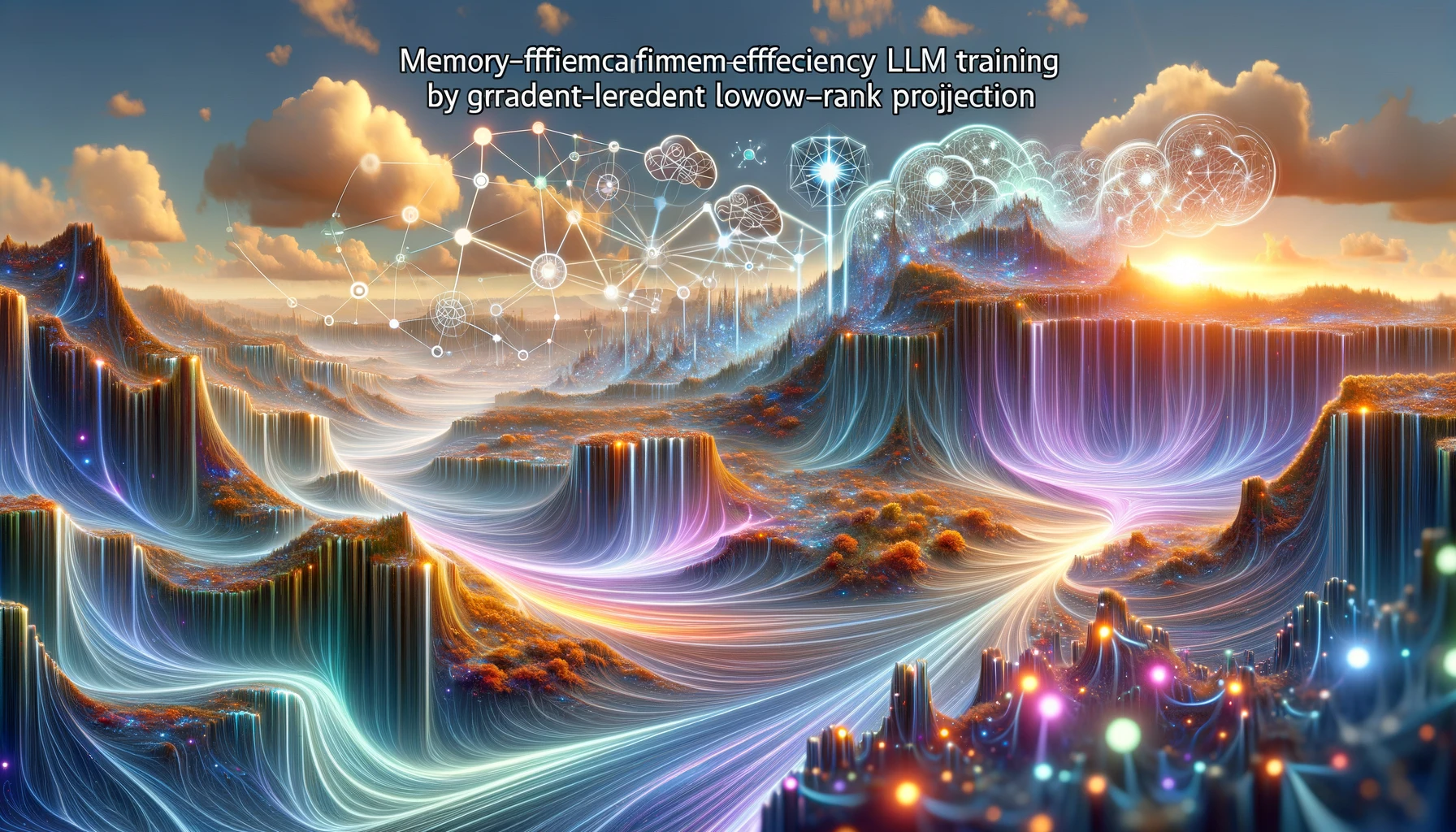Key Points
1. The research paper presents challenges related to memory efficiency in training large language models (LLMs), particularly due to the increasing size of weights and optimizer states.
2. The paper introduces the Gradient Low-Rank Projection (GaLore) training strategy, which allows for full-parameter learning while being more memory-efficient than common low-rank adaptation methods such as LoRA.
3. GaLore is shown to reduce memory usage by up to 65.5% in optimizer states while maintaining efficiency and performance for pre-training on LLaMA 1B and 7B architectures with C4 dataset with up to 19.7B tokens, and on fine-tuning RoBERTa on GLUE tasks.
4. The paper demonstrates that GaLore is the first to show the feasibility of pre-training a 7B model on consumer GPUs with 24GB memory without model parallel, checkpointing, or offloading strategies.
5. GaLore is a gradient projection method that is independent of the choice of optimizers and can be easily integrated into existing ones with only two lines of code.
6. The research paper highlights the comparison of GaLore with Low-Rank Adaptation (LoRA) and its variants, demonstrating the superior performance of GaLore in terms of memory efficiency and convergence.
7. GaLore is shown to be compatible with memory-efficient optimization techniques, including 8-bit optimizers, Adafactor, and per-layer weight updates, further reducing the memory footprint during training.
8. Experiment results indicate that GaLore achieves better performance than LoRA on most tasks with less memory footprint, making it a full-stack memory-efficient training strategy for LLM pre-training and fine-tuning.
9. The paper concludes by identifying open problems related to GaLore, such as its applicability to other types of models and the potential for further improving memory efficiency through quantization or special parameterization.
Summary
Memory-Efficient Training with GaLore
The paper "GaLore: Memory-Efficient LLM Training by Gradient Low-Rank Projection" addresses the memory challenges associated with the training of large language models (LLMs), proposing a new training strategy called Gradient Low-Rank Projection (GaLore). The authors compare GaLore with low-rank adaptation methods such as LoRA and ReLoRA, demonstrating that GaLore reduces memory usage in optimizer states by up to 65.5% while maintaining efficiency and performance for pre-training and fine-tuning stages. Additionally, GaLore achieves significant memory reduction without compromising model performance and enables the pre-training of a 7B LLM model on consumer GPUs with 24GB memory, demonstrating its feasibility.
Proposal and Justification of GaLore
The proposed GaLore method leverages the slow-changing low-rank structure of the gradient matrix of the weight matrix, projecting the gradient into a low-rank form to substantially reduce memory usage. The paper discusses the theoretical justification of the low-rankness of the gradient update and convergence analysis of GaLore, asserting that it allows full-parameter learning while being more memory-efficient than common low-rank adaptation methods. Furthermore, GaLore is demonstrated to be independent of the choice of optimizers and can be easily integrated into existing ones with minimal additional computational cost. The authors also compare GaLore with other low-rank algorithms, demonstrating its superior performance and memory efficiency in pre-training and fine-tuning stages.
Evaluation of GaLore Method
The paper provides a comprehensive evaluation of the GaLore method, including pre-training LLaMA models on the C4 dataset and fine-tuning on the GLUE benchmark, showcasing its performance and memory efficiency. Additionally, the authors address practical considerations, such as the scaling up to 7B models on consumer GPUs and the application of GaLore with memory-efficient optimizers, demonstrating its compatibility and further memory reduction capabilities. Through experiments and measurements, the authors demonstrate the effectiveness of GaLore in reducing memory usage and its potential for real-world applications.
Future Research Directions and Impact
The paper also discusses open problems and future research directions, such as applying GaLore to other types of models, exploring further memory efficiency improvements, and the possibility of elastic data distributed training on low-bandwidth consumer-grade hardware. The authors emphasize the potential environmental impact of GaLore in reducing energy consumption and carbon footprint associated with LLM pre-training and fine-tuning.
Reference: https://arxiv.org/abs/2403.035...
